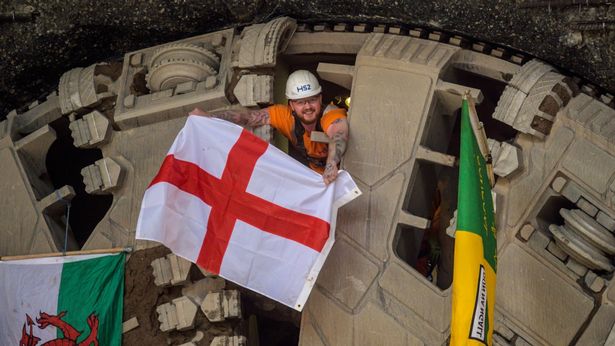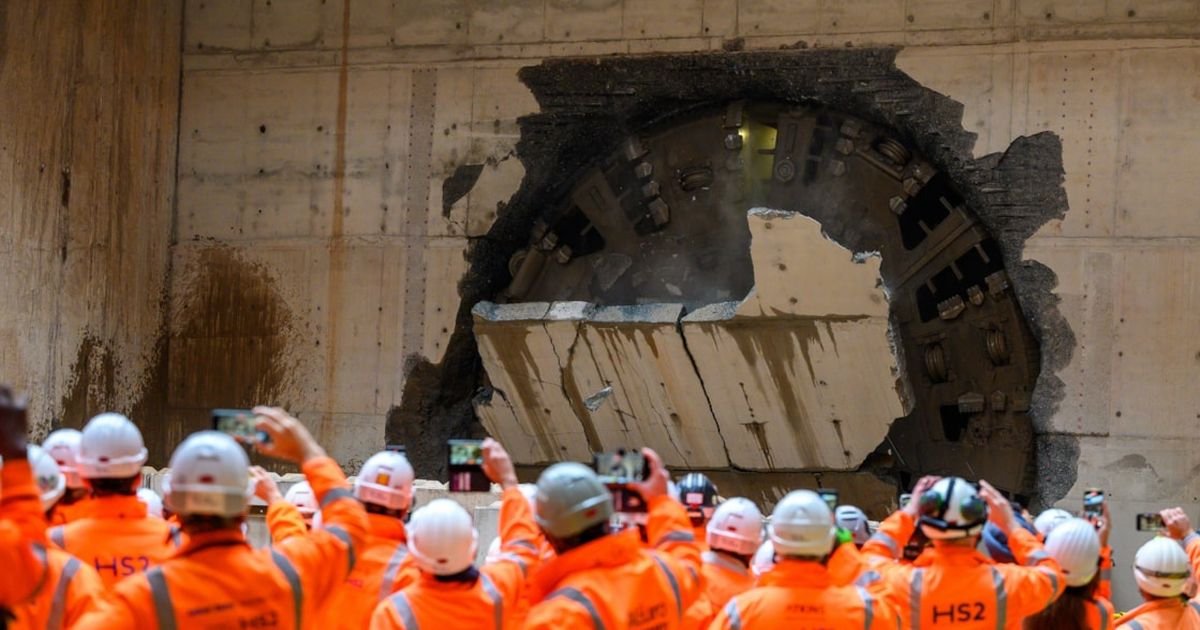It has been hailed as a major breakthrough for HS2
This was the dramatic moment a colossal machine, used to dig HS2’s Birmingham approach tunnels, smashed through a wall to finally reach the city after a 19-month journey.
The enormous 125-metre-long ‘boring machine’ surfaced yesterday, October 13, after one year and seven months of drilling between Water Orton and Washwood Heath.
Footage captured the machine breaking through – thus completing the three-and-a-half mile tunnel and signalling the end of excavations for all tunnels from London to Birmingham.
READ MORE: Nineteen-mile tunnel dug 130ft below Birmingham finishes epic task
The machine, named Elizabeth after the 19th century philanthropist Elizabeth Cadbury, was launched near Water Orton in Warwickshire in March 2024.
Two identical machines were used to dig the 3.5 mile-long Bromford tunnel that will carry high speed trains under the M6 and eastern outskirts of the city. The first one – Mary Ann – broke through earlier this year.
Elizabeth and Mary Ann have excavated more than 1.8 million tonnes of material and installed 5,804 concrete ring segments for the twin, eastbound and westbound tunnels. The spoil, made up of various grades of Mercia Mudstone, is being used to landscape the railway on the approaches to the city.
Yesterday’s milestone means that all the excavation is now complete for the 23 miles of deep bore tunnel between Old Oak Common in West London and the railway’s terminus at Birmingham Curzon Street.
 Flags waved after the HS2 tunnel breakthrough in Washwood Heath (Image: HS2)
Flags waved after the HS2 tunnel breakthrough in Washwood Heath (Image: HS2)
Alan Morris, HS2 Ltd’s construction delivery director, said yesterday: “Today’s breakthrough is a major milestone for the tunnelling team here in Birmingham and for the HS2 project.
“All eight of the machines digging our tunnels between Old Oak Common and Curzon Street have now broken through – which means that the focus is now on the internal concrete work, ventilation shafts and cross passages.
“I’m immensely proud of the men and women who have worked round the clock to bring our machines and their crews home safely, and I look forward to seeing more progress inside the tunnels in the years ahead.”
Jules Arlaud, Balfour Beatty VINCI’s tunnelling director, added: “Our expert tunnelling team have worked around the clock over 19 months to arrive at this point.
“A sense of achievement and pride is felt by everyone connected with the project and follows years of planning and preparation.
“This has allowed us to guide Elizabeth safely and successfully underneath complex ground conditions and critical live infrastructure, including energy networks, the M6 and the River Tame.
“A breakthrough is always a unique moment, and it marks the culmination of exceptional engineering, dedication, and collaboration.”
